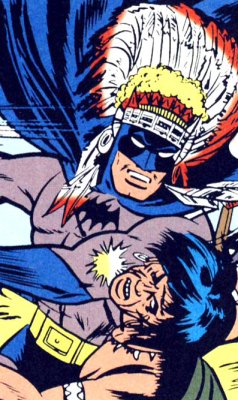Welcome to guest blogger Kaeleigh H., who is a student at Indiana University in the Archaeology and Social Context Program. She sent this post over as a tip, but I thought it was so awesome I’d just go ahead and publish it. Want to see your writing on Native Appropriations? Just send me an email!
AK note: This summer, residents of the wealthy suburban community of Mystic, Connecticut are playing host to researchers armed with metal detectors and shovels, as they scour the manicured lawns and tidy flowerbeds looking artifacts and remnants of the Pequot War, a bloody battle that took place in the mid 1600’s. The AP decided to cover the story, and Kaeleigh gives us her take on the language choices made by the reporter throughout:
Archaeological surveys and excavations are taking place in Mystic, Connecticut on the site of a battle of the Pequot War. Members of the Mashantucket Pequot tribe and the Eastern Pequot tribe are taking part in the project, which is the joint venture of Mashantucket Pequot Museum and Research Center at Foxwoods and the University of Connecticut.
It sounds like a good collaborative, community-based project, but the following statement from the article about the battle and the archaeological work being done on the site is where it gets problematic:
“Historians are split to this day on whether the Pequots were victims of cruel English settlers who wanted their land — or brought the attack on themselves by raiding a settlement a month earlier in Wethersfield, killing nine people and carrying off two girls. The researchers in Mystic aren’t taking sides.”
They “aren’t taking sides,” sure. This statement completely avoids any discussion of what right the English settlers had to be there in the first place. Oh, and what the author means by “the attack” is “the massacre of 400-700 Pequot people (mostly women, children, and the elderly, according to Wikipedia) and the enslavement of any survivors.”
The horrible question of “But did they deserve it?” implies that the Pequots’ killing of nine people and kidnapping of two in order to defend themselves from further hostile advances by the English is the same as the English settlers taking Pequot land and then killing and enslaving several hundred Pequot people, many of whom may not have been in a position to defend themselves during the battle. The very question/comparison shows me that they’ve already “taken sides”. In this limited and dualistic interpretation of events, it’s heads the settlers win, tails the Pequot lose. On one hand the Pequot are just victims of the English, and on the other they’re murderers and kidnappers who “brought the attack on themselves.”
And then there’s this:
“Some homeowners even worried that the wealthy Mashantucket Pequots could use the archaeology project as a way to take their property. McBride says convincing the landowners that the Pequots can’t do so has been one of his biggest challenges.”
Given the fact that archaeology was (and sometimes still is) a tool of colonization in North America–part of the legacy of widespread violence committed by western settlers against Native peoples in attempts to control them and their resources–it’s pretty ironic that the area homeowners are worried that the Pequot could use this project as a means of “taking their property”.
Obviously they see this as a real danger and had to be convinced that should they participate, the project’s findings wouldn’t negatively affect their lives in any way. This attitude is really troubling to me, because it seems that local people are very aware of the massacre and know the story of it, but archaeological “evidence” would somehow make it more real to them…real enough that it might change their lives. By denying the archaeologists permission to dig up the “evidence,” area residents are thinking that they’ll somehow be better able to dismiss the realities of the massacre and hang onto their own present-day reality, which involves living on Pequot land and not having to think too much (as one resident said in the beginning of the article) about the battle that took place there.
Notice also that the Pequot are referred to in the article as “powerful” and “aggressive” (in the past) and “wealthy” (in the present), the latter descriptor being a result of the “phenomenal success” of their casino, which annoys everybody else in the area because of all the extra traffic it brings. The last quote I used even kind of portrays the Mashantucket Pequot as some kind of greedy corporation out to get area residents (that might be a slight exaggeration, but it definitely wasn’t a positive tone).
I don’t mean to be overly negative about the article; I just wanted to point out and discuss some of the problematic attitudes I feel are represented within it. I think the project itself sounds really good, and I believe archaeology can be a really powerful and transformative force when communities are willing to collaborate, listen, learn, compromise, and respect one another. I hope that the archaeological crew will address some of the issues that area residents are bringing up.
AK note: Additionally, the “wealthy” Mashantucket Pequot is actually a misnomer, as the tribe has been going through a ton of financial trouble as of late. The tribe is facing the repayment of a $700 million dollar loan, and restructuring over 2 billion dollars in debt. In addition, tribal members, as of August, will no longer be receiving “per capita” payments (individual payouts from casino earnings). They are not the all-powerful rich casino tribe the article paints them to be.
(Thanks Kaeleigh!)





















